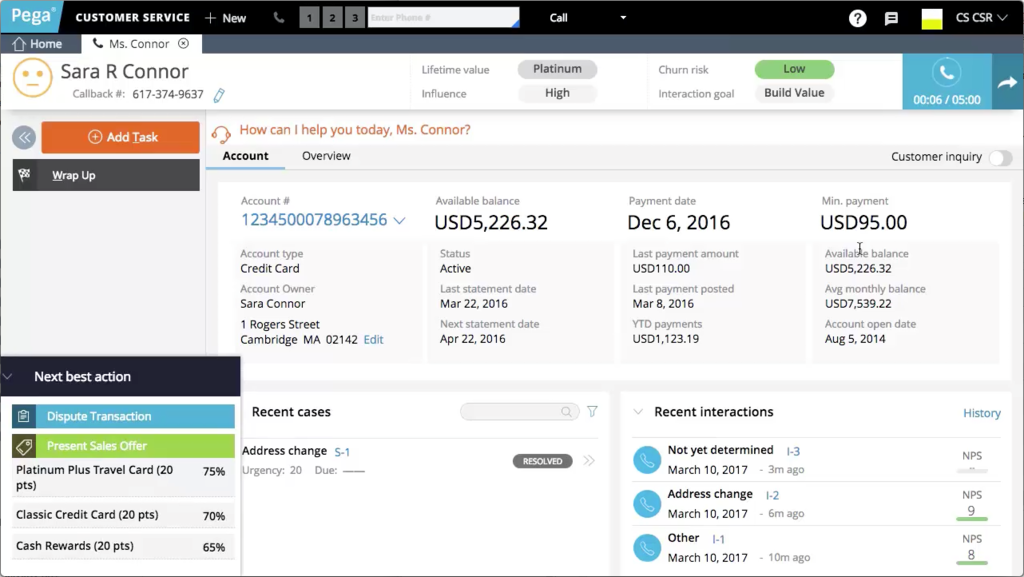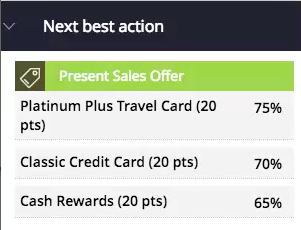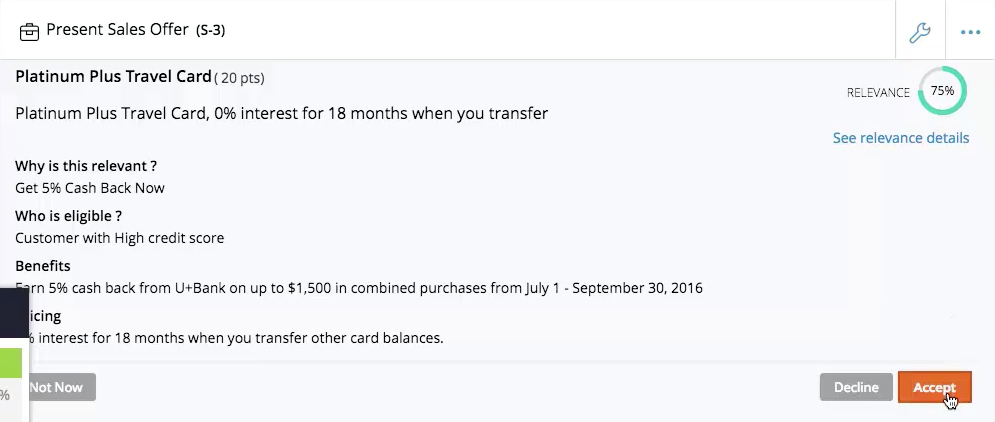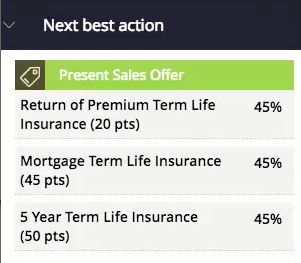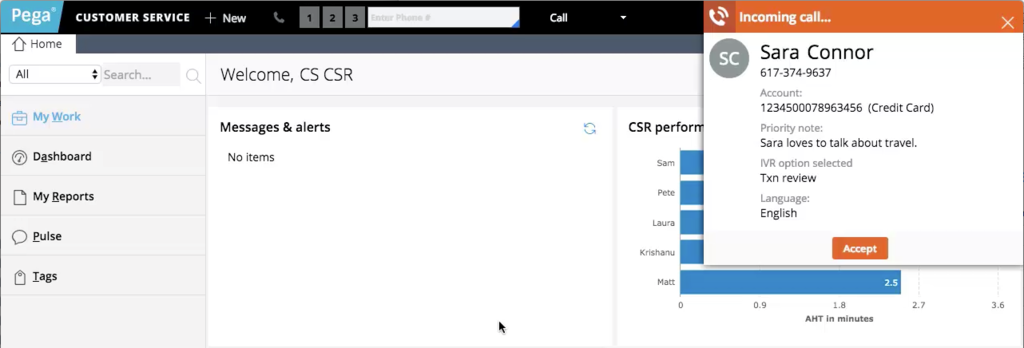
Next-Best-Action in a contact center
Introduction
The Customer Decision Hub is an “always on” centralized decisioning “brain” that calculates a 1-to-1 business case for every Next-Best-Action recommendation. To create the business case, the Customer Decision Hub combines customer profile with previous interaction results, the current call context, business rules, and then applies predictive analytics.
Video
Transcript
Next-Best-Action is used to ensure a customer service representative takes relevant actions at every step during a customer interaction.
In this scenario, U+ is a retail bank that uses Pega Customer Service in its contact center.
A call comes in to the U+ service center from Sara Connor, a U+ customer. The call is immediately routed to a service representative.
The call details from the IVR system indicate that Sara would like to discuss recent credit card transactions.
Once the service representative accepts the call, all relevant details about Sara are visible on screen.
Next-Best-Action then guides the representative to take the next step with Sara.
In the lower left corner of the screen you can see the Next-Best-Action that has been recommended to the agent by the Customer Decision Hub.
The Customer Decision Hub is an “always on” centralized decisioning “brain” that calculates a 1-to-1 business case for every Next-Best-Action recommendation. To create the business case, the Customer Decision Hub combines customer profile with previous interaction results, the current call context, business rules, and then applies predictive analytics.
The Customer Decision Hub re-evaluates the Next-Best-Action and delivers a new recommendation when any new information becomes available. For example, when the customer responds to the recommended action.
In this case, the recommended action is to start a service task to handle Sarah’s transaction dispute. So the service representative carries out the task. But the representative is always in control and can select other service actions as appropriate during the conversation.
Once the service representative completes the task, the Next-Best-Action is refreshed to show the next recommended action, which is to present a sales offer.
The Customer Decision Hub has analyzed Sara's credit card usage patterns, which indicate that she is a frequent traveler.
As a frequent traveler she often pays a large amount in foreign currency transaction fees. So the highest recommendation is for a Platinum Plus Travel Card, which has no foreign currency transaction fees.
The percentages to the right are scores that are used to rank all relevant offers. The scores are calculated by balancing what the bank would like to promote with what Sara is likely to be interested in.
The representative can view more details about the recommended offer so he can further discuss its benefits with Sara.
In this case, Sara is interested in knowing more.
After learning about the benefits of the offer, Sara is indeed convinced that it's a good offer for her, and she decides to accept it.
When the representative clicks Accept, the customer response is recorded in the Interaction History.
This new information is used by the Customer Decision Hub to make the next recommendation.
Notice that the Next-Best-Action is now refreshed.
The Platinum Plus Travel Card and all other credit card offers have been removed from the list.
To summarize, the always on, centralized Customer Decision Hub combines customer and contextual information with business rules and analytics to recommend the Next-Best-Action in real-time.
The Next-Best-Action is re-evaluated when new information becomes available.
This Topic is available in the following Modules:
If you are having problems with your training, please review the Pega Academy Support FAQs.
Want to help us improve this content?

